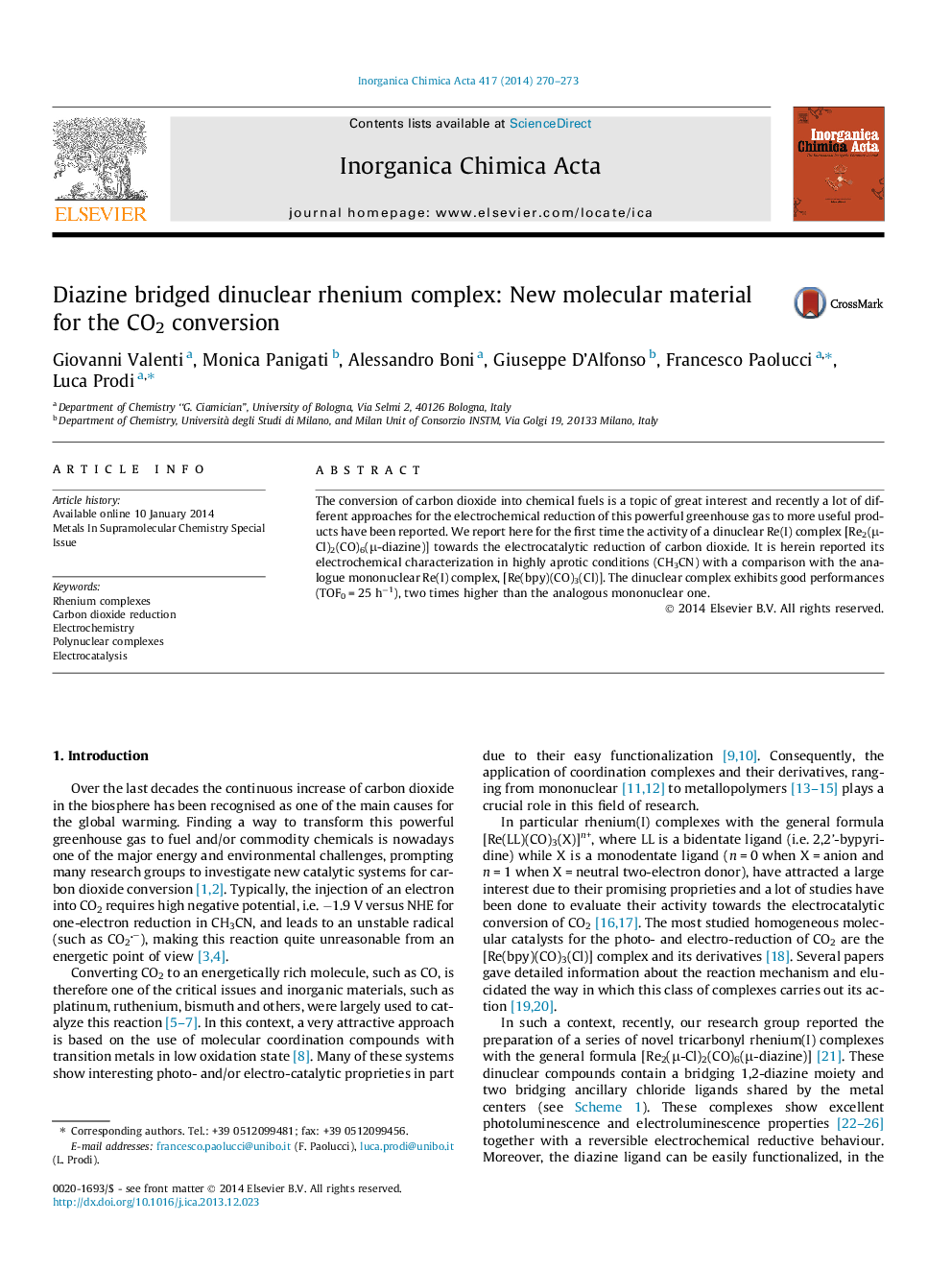| Article ID | Journal | Published Year | Pages | File Type |
|---|---|---|---|---|
| 1312199 | Inorganica Chimica Acta | 2014 | 4 Pages |
•Electrochemistry of [Re2(μ-Cl)2(CO)6(μ-diazine)] in highly aprotic conditions.•Electrochemical behaviour of the analogue Re(I) mononuclear [Re(bpy)(CO)3(Cl)].•We report a novel application of [Re2(μ-Cl)2(CO)6(μ-diazine)] for CO2 conversion.•The [Re2(μ-Cl)2(CO)6(μ-diazine)] shows a very high catalytic activity (TOF0 = 25 h−1).•The dinuclear rhenium complex shows two times higher TOF0 than [Re(bpy)(CO)3(Cl)].
The conversion of carbon dioxide into chemical fuels is a topic of great interest and recently a lot of different approaches for the electrochemical reduction of this powerful greenhouse gas to more useful products have been reported. We report here for the first time the activity of a dinuclear Re(I) complex [Re2(μ-Cl)2(CO)6(μ-diazine)] towards the electrocatalytic reduction of carbon dioxide. It is herein reported its electrochemical characterization in highly aprotic conditions (CH3CN) with a comparison with the analogue mononuclear Re(I) complex, [Re(bpy)(CO)3(Cl)]. The dinuclear complex exhibits good performances (TOF0 = 25 h−1), two times higher than the analogous mononuclear one.
Graphical abstractNovel application of [Re2(μ-Cl)2(CO)6(μ-diazine)] complex to the CO2 conversion was reported. The dinuclear rhenium complex shows a remarkable TOF0 value, two times higher than the model mononuclear catalyst [Re(bpy)(CO)3(Cl)].Figure optionsDownload full-size imageDownload as PowerPoint slide
